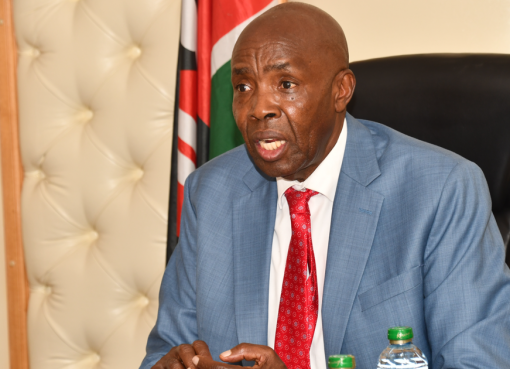The nutrition status of women of childbearing age and children under 5 years is alarmingly poor in Kajiado County.
According to a recent survey, malnutrition which is indicated by stunting, underweight and wasting rates has increased between 2014 and 2018.
Currently, one in every four children below five years in Kajiado county is stunted while in every 10, one is wasted and 22 in every 100 children are underweight according to SMART survey which was conducted in 2018.
According to Ruth Nasikoi who is the County Nutrition Coordinator, Poor diet diversification, poor maternal infant and young child practices, poor hygiene and sanitation practices, recurrent drought, low nutrition knowledge among communities and long distance to health facilities among other factors contribute to the high rate of malnutrition in Kajiado County.
“Poor feeding practices among young children remains a key contributory factor for malnutrition in Kajiado County where only 57.3% of children with 6-23 months consume foods from more than five food groups with only 30% of households consuming iron rich foods frequently (6-7) days a week,” says Nasikoi.
Nasikoi says that long distances to the health facilities and poor road network are a major contributor too, as some communities have to travel for more than 5 km to health facilities, thus affecting their visits to the health centers.
Failure to visit health centers slows detection of malnutrition and denies access to crucial information on health to the caregivers.
Inadequate rainfall and subsequent drought also lead to malnutrition in the county as most parents depend on livestock farming thus when drought comes, their source of livelihood is cut off meaning few meals which have to be rationed unlike when there is adequate rainfall.
The high work load for women in both urban and rural areas within the county also negatively impacts the development of a child in pregnant women.
Nasikoi notes that most urban women work in flower firms which have tight work schedules while for those in the rural areas, they carry out strenuous tasks like fetching water and collecting firewood thus impacting the development of the foetus.
Pregnant women who are under nourished have a higher risk of developing anemia which leads to still births and those that survive have a risk of low birth weight, birth defects, underdevelopment of some organs and brain damage among other risks.
Kajiado County Government recognizes that the high rate of malnutrition is a threat to achieving Sustainable Development Goals and Vision 2030 and goes against the constitution, which emphasizes the right to the highest standard of health.
“In order to address the various forms of malnutrition in the county, Kajiado county government recently launched the Kajiado County Nutrition Action Plan (CNAP).
The five-year plan will facilitate the mainstreaming of nutrition in county development plans and budgets, and subsequently address the problem of malnutrition,” adds Nasikoi.
Nasikoi also revealed that as a department, they have managed to establish five Kangaroo Mother Care Centers at the Kajiado County Referral Hospital, Kitengela Sub County Hospital, Ongata Rongai Sub County hospital, Ngong Sub County Hospital and Oloitoktok Sub County Hospital.
Kangaroo Mother Care (KMC) is among the high impact health interventions that has shown to improve neonatal survival among pre-terms and low birth weight babies.
Nasikoi also notes that integration of day care facilities for the children also plays a key role in fighting malnutrition. She notes that most working mothers leave their children at day care centers which provide only one type of food to the children thus leading to their stunted growth.
“As a county government, we are partnering with the flower firms within the county to integrate day care facilities in the firms, which gives the mothers room to breastfeed and nurse their children as they work,” notes Nasikoi.
The county has also embarked in strengthening community level health promotion interventions towards increasing demand for health services from the target beneficiaries through utilization of Mother-to-Mother Support groups and Father-to-father support groups.
“To date, a total of 70 mothers and 70 fathers have been sensitized on Anzilisha key messages that cut across pregnancy through the 1000 days period focused on improved maternal outcomes messages and participate actively in the support group meetings under the leadership of the trained lead mothers and fathers,” says Nasikoi.
Currently the trained lead mother/fathers have reached over 200 Pregnant/Lactating women and 82 community members with key Maternal Neonatal Health and Nutrition (MNHN) messages during the quarter.
According to the Kenya Demographic and Health Survey (2014) the economic impact associated with underweight and stunted children is quite significant with far reaching effects on health, education and productivity.
The survey indicated that under nutrition increases the risk of illness and death among children which is associated with incidences of malaria, diarrhea, pneumonia, anemia and acute respiratory infections.
Children who are stunted below the age of five attain 3.5% less grades in school compared to non-stunted children according to the survey. The survey estimated that only 16.9% of stunted people of the working population in Kenya completed primary school compared to 62.2% of those who were never stunted.
By Diana Meneto





